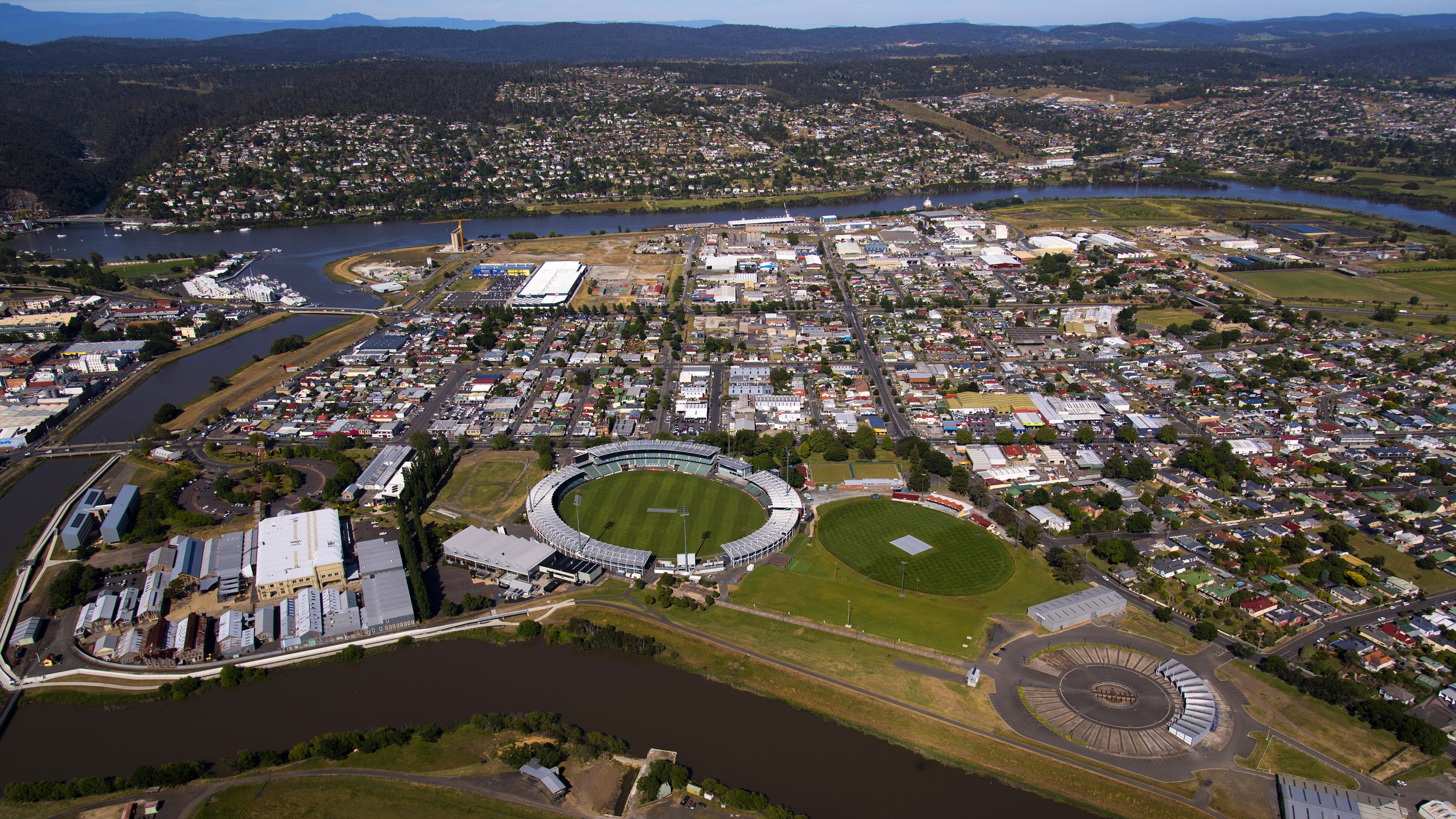
Stormwater
Formed in 2011, the Northern Tasmanian Stormwater Working Group (NTSWG) brings together the eight councils in the northern region, along with TasWater and the EPA to improve stormwater management. This program aims to manage threats to water quality and the ecological health of the Kanamaluka / Tamar estuary that are linked to stormwater pollution, through continued improvement to management and industry education.
Focus
A key role of the NTSWG is to facilitate increased implementation of Erosion and Sediment Control (E&SC) practices and Water Sensitive Urban Design (WSUD) throughout the northern region. To minimise pollutants entering the waterways from runoff into the stormwater system, the NTSWG aims to raise community awareness about how everyone can improve stormwater management.
There are plenty of things we can do at home to prevent pollutants from mixing in with stormwater including improving garden designs to minimise erosion, eliminating toxic substances and nutrients from flowing into drains, installing rainwater tanks, absorbent yards or raingardens, and placing rubbish into waste bins.
Value
Stormwater is a term used to describe rainwater runoff in urban areas from roofs, driveways, roads, car parks, paved areas, gardens, and other open spaces. Some stormwater soaks into the ground, evaporates or is captured by rainwater tanks, but most enters stormwater drains and flows directly into our natural waterways which are home to sensitive aquatic animals and plants and are used for recreational and economic activities.
Historically, dense vegetation helped to slow rainwater runoff and minimised erosion, however vegetation clearing and installation of sealed surfaces (roads, car parks, roofs, etc.) through urban development increases the amount of stormwater runoff and pollutants entering waterways.
Delivery
Through the NTSWG, the TEER Program works with program partners to:
improve Erosion and Sediment Control practices throughout the region
facilitate increased adoption of Water Sensitive Urban Design
improve statewide consistency in managing stormwater quantity and quality
raise community awareness about how everyone can improve to stormwater quality.
The TEER Program has worked with the Derwent Estuary Program, the Local Government Association of Tasmania (LGAT), and several local government representatives to develop the Tasmanian Stormwater Policy Guidance and Standards for Development (TSPG). The TSPG is designed to be used by councils to develop policy on stormwater management and support consistency across the state.
Erosion and Sediment Control (E&SC)
Exposed soils such as sediment are easily washed away during rainfall events. Studies have shown that sediment loss from urban areas can contribute substantial sediment loads to local waterways. Large amounts of sediment in waterways can be harmful to aquatic organisms including fish and plants, and can silt up steams and block stormwater pipes, leading to increased flooding. Sediment also often transports other pollutants such as oils, heavy metals, and hydrocarbons from building and construction sites into local waterways. Subsequently, it is important to adopt best practice soil and water management measures on site during building and construction activities.
The TEER Program facilitates E&SC training for industry and council partners to maintain currency in understanding best practice to reduce sediment and pollutant run-off from construction sites. The TEER Program also partners with Master Builders Tasmania and the Derwent Estuary Program to reward commercial and residential builders for good examples of E&SC on site. For more information including access to fact sheets and guidelines, visit our Erosion and Sediment Control page.
Quick Q&A
-
Stormwater runoff is mostly untreated water that collects pollutants as it flows over the land and through urban areas. Without effective treatment, pollutants are transported directly into natural waterways. These pollutants can be harmful to people and aquatic organisms and can impact the health and natural beauty of our waterways.
Stormwater pollutants such as oil, grease, fuels, fertilisers, herbicides, pesticides, detergents, chemicals, litter, and heavy metals, which aren’t naturally found in our waterways, can be toxic and dangerous even in small amounts. Other pollutants like sediment, nutrients from organic wastes (lawn clippings, leaves) and bacteria (animal droppings) are naturally found in waterways but become concentrated in stormwater and can be harmful.
-
Before the development of urban areas, Lutruwita / Tasmania was covered with dense vegetation which helped to slow the flow of stormwater, and allowed more time for stormwater to be absorbed which reduced the volume of runoff. Vegetation also utilises nutrients for growth and has root systems that act as anchors to trap sediment and prevent erosion, which reduces pollutants and improves the quality of stormwater.
As our population has grown and urban areas expanded, much of this vegetation has been cleared and replaced with sealed surfaces like roofs, driveways, roads, car parks and pavements, preventing rainwater from soaking into the ground. Rainwater commonly collects pollutants deposited by vehicles, pollutants from our gardens, and stray pieces of litter which end up in stormwater systems, before ultimately discharging to our natural waterways.
-
Stormwater management initially focused on draining urban areas as quickly as possible during rainfall events. This approach has been very effective in flood mitigation, but unfortunately, equally effective in washing large amounts of pollution directly into our waterways.
Declining water quality and ecological health in urban waterways has led stormwater managers to review traditional approaches to managing stormwater. The initial focus was on flood mitigation but grew to include the preservation and restoration of urban waterways as well as the use of stormwater as a resource. The review process led to the development of Water Sensitive Urban Design (WSUD) in Perth, WA during the early 1990s, an improved approach to stormwater management which has been increasingly adopted around Australia.
-
There are plenty of things we can do at home to prevent pollutants from mixing in with stormwater, including:
• improving garden design to minimise erosion
• eliminating toxic substances and nutrients flowing into drains
• installing rainwater tanks
• absorbent yards or raingardens
• placing rubbish into waste bins.




